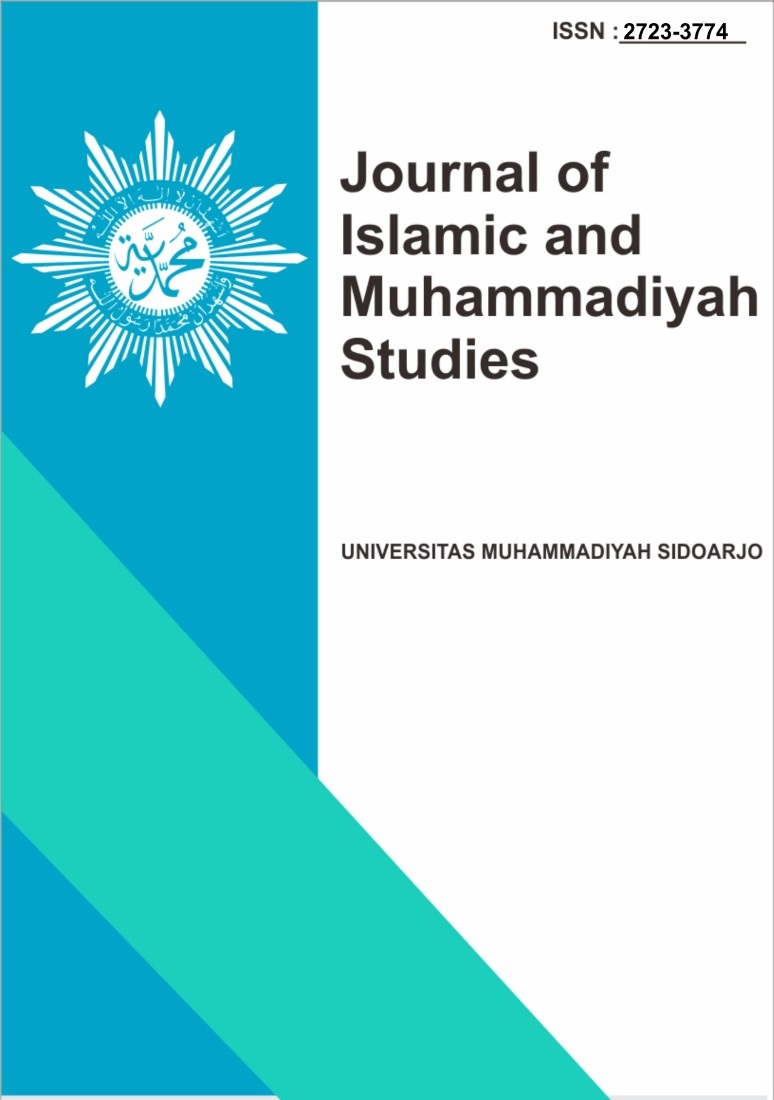Science Misconceptions on Earth Layer Concepts among Junior High Students
Kesalahpahaman Ilmiah tentang Konsep Lapisan Bumi di Kalangan Siswa SMP
DOI:
https://doi.org/10.21070/jims.v7i1.1640Keywords:
Misconceptions, Junior High School, Science Education, Earth Layer, Diagnostic TestAbstract
General background: Education consistently requires students not only to master content but also to comprehend interrelated concepts, making misconceptions common in science learning. Specific background: In junior high schools, especially in the context of natural science learning, complex topics such as Earth layers often generate misunderstandings that affect further conceptual development. Knowledge gap: While misconceptions in science have been widely recognized, limited empirical studies explore how these misconceptions manifest in Muhammadiyah school settings. Aims: This study investigates the types and prevalence of misconceptions among Grade VII students at SMP Muhammadiyah 9 related to Earth layer material. Results: Using a survey approach with the Three-Tier Multiple Choice Diagnostic Test, findings revealed misconceptions across all subchapters. Male students showed the highest misconception rate (65.9%) in identifying elements of the atmosphere, while female students reached the highest rate (74.2%) in understanding temperature in the mesosphere and the ozone layer. Novelty: This study provides specific evidence of gender-based misconception patterns within a Muhammadiyah boarding school, offering new insights into science education challenges in faith-based institutions. Implications: Results underscore the need for diagnostic-based instructional interventions to address misconceptions and improve conceptual accuracy in science education.
Highlights:
-
Misconceptions persist across all Earth layer subchapters.
-
Gender patterns show different misconception dominance.
-
Findings suggest targeted interventions for science learning.
Keywords: Misconceptions, Junior High School, Science Education, Earth Layer, Diagnostic Test
References
Agustina, E. S. (2017). Pembelajaran bahasa Indonesia berbasis teks: Representasi Kurikulum 2013. Lampung, 18(1).
Natalia, T., Kalorin, & others. (2016). Miskonsepsi pada penyelesaian soal aljabar siswa kelas VIII berdasarkan proses berpikir Mason. Jurnal Pendidikan, 1(10).
Depdiknas. (2006). Peraturan Menteri Pendidikan Nasional Nomor 22 Tahun 2006 tentang standar isi. Jakarta: Direktorat Jenderal Manajemen Pendidikan Dasar dan Menengah.
Pesman, H., & Eryilmaz, A. (2010). Development of a three-tier test to assess misconceptions about simple electric circuits. The Journal of Educational Research, 103, 208–222.
National Science Teachers Association. (2013). Buku pedoman guru biologi (4th ed.). Jakarta Barat: PT. Indeks.
Mustaqim, T. A., Zulfisni, & Herlanti, Y. (2014). Identifikasi miskonsepsi siswa dengan menggunakan metode Certainty of Response Index (CRI) pada konsep fotosintesis dan respirasi tumbuhan. EDUSAINS, 2, 146–152.
Suparno, P. (2005). Miskonsepsi dan perubahan konsep dalam pendidikan fisika. Jakarta: Grasindo.
Mustaqim, T. A., Zulfisni, & Herlanti, Y. (2014). Identifikasi miskonsepsi siswa dengan menggunakan metode Certainty of Response Index (CRI) pada konsep fotosintesis dan respirasi tumbuhan. EDUSAINS, 2, 146–152.
Wafiyah, N. (2012). Identifikasi miskonsepsi siswa dan faktor-faktor penyebab pada materi permutasi dan kombinasi di SMA Negeri 1 Manyar. Gamatika, 2(2).
Yanmelsi. (2018). Miskonsepsi pada materi litosfer untuk mengungkap pemahaman konsep siswa kelas X di SMA Negeri 8 Kota Bengkulu. Jurnal Georafflesia, 3, 37–48.
Soeharto, Csapo, B., Sarimanah, E., Dewi, F. I., & Sabri, T. (2019). A review of student's common misconceptions in science and their diagnostic assessment tools. Jurnal Pendidikan IPA Indonesia, 8, 247–266.
Singarimbun, M., & Effendi, S. (1989). Metode penelitian survei (Rev. ed.). Jakarta: LP3S.
Sugiyono. (2017). Metodologi penelitian kuantitatif, kualitatif dan R&D. Bandung: Alfabeta.
Suparno, P. (2005). Miskonsepsi dan perubahan konsep dalam pendidikan fisika. Jakarta: Grasindo.
Downloads
Published
How to Cite
Issue
Section
License
Copyright (c) 2025 M. Rizal Setia Wijaya , Noly Shofiyah

This work is licensed under a Creative Commons Attribution 4.0 International License.
Authors retain copyright and grant the journal right of first publication with the work simultaneously licensed under a Creative Commons Attribution 4.0 International License that allows others to share the work with an acknowledgement of the work's authorship and initial publication in this journal.






